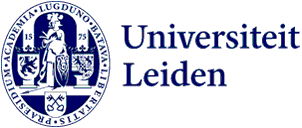
New professor of Theoretical Physics: ‘The problems I study can come from anywhere in society’
The financial sector, supply chains and ecology. Not necessarily topics you might associate with physics, yet it’s exactly what new professor Diego Garlaschelli is dealing with. The common thread? Complex networks.
‘My field lies outside the usual playground of physicists. That’s what makes it so much fun,’ says Garlaschelli who, since 1 November, has been appointed full professor of Theoretical Physics with a special focus on networks and complex systems.

Networks are all around us
Garlaschelli looks for universal characteristics of networks, from roads to social networks or the World Wide Web. You can envision a simple network as nodes that are connected with links. This quickly becomes more complex when some nodes are more densely connected or when the nature of the links varies. Then imagine the network to be the size of countries or even the whole globe, and you’re getting an idea of Garlaschelli’s work.
The newly appointed professor is interested in processes within such networks. ‘When there is a shock on one of the nodes I try to understand how that will propagate through the network, affecting the other nodes,’ he says. ‘Especially in situations where you cannot see all the connections. For example, if one person is infected with a disease, how will it spread? And how can we adjust relevant policies even when the information is incomplete? Statistical physics fills the gaps when information is missing. I enjoy that interface with societally relevant problems.’
‘We came up with methods that really mattered’
Those problems can come from any field. ‘After the financial crisis in 2008, central banks and regulators realised they had to improve their risk assessment,’ Garlaschelli begins. ‘Banks lend each other money so if one falls, that sets off a domino effect. The risk therefore depends heavily on the structure of the network, yet they weren’t taking that into account. We provided our expertise to help.’
'The more globalised the world gets, the more relevant knowledge of networks becomes.'
‘Another project I work on is about supply chains,’ he continues. ‘There is a lot of interest in how shocks propagate across production networks since entire sectors had to shut down during Covid.’ In this case, the nodes are the companies, but the nature of the links can vary. Money is exchanged for different products or services. ‘This was more complex than the banks, so we interacted with experts and adapted our models.’
Not all his projects come from the realm of economy or industry though. An example is food chains: who eats whom? Or, as a physicist would describe it, how does energy flow through a network of organisms? ‘This influences biodiversity and food availability. Shocks can be climate change or human influences. I find it interesting to predict how species will be affected based on the available information,’ Garlaschelli says.
Filling in the gaps
Garlaschelli interacts with people from many different fields, from social scientists to ecologists. ‘That’s what I like most: learning from these experts and understanding how I can help solve problems they face. Together, we came up with methods that really mattered.’ A common factor in all his projects is that he only has access to part of the data. ‘When a part of the network is missing or hidden, we need to do network reconstruction. For example, when we can’t access confidential data or observations are incomplete. Then we need to create a realistic model to fill in the gaps. That’s a fun challenge to me.’
When Garlaschelli came to Leiden 13 years ago, network theory was a relatively new field. According to him, it is becoming ever more relevant. ‘The more globalised the world gets, the more interconnected networks become,’ he explains. ‘Understanding how they work can make a real difference in practice.’
